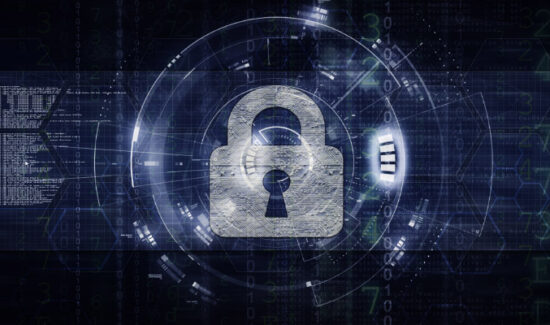4 Key Things to Consider When Evaluating Cloud Data Protection Tools


This is part of Solutions Review’s Premium Content Series, a collection of contributed columns written by industry experts in maturing software categories. In this submission, Keepit Chief Customer Officer Niels van Ingen offers four essential keys to consider when evaluating cloud data protection tools.
 No one likes surprises, particularly IT executives who believe their SaaS cloud providers have taken all the necessary steps to back up customers’ critical enterprise data. This is never truer when a catastrophic disaster strikes, whether from an internal mistake or an attack from the outside, leaving business operations at a complete standstill.
No one likes surprises, particularly IT executives who believe their SaaS cloud providers have taken all the necessary steps to back up customers’ critical enterprise data. This is never truer when a catastrophic disaster strikes, whether from an internal mistake or an attack from the outside, leaving business operations at a complete standstill.
The unfortunate truth is that most SaaS providers don’t offer the necessary level of data backup and recovery that enterprises require to get back up and running.
And guess what? If you read the cloud agreement, you’ll discover SaaS vendors aren’t responsible for data backup. The onus is on you.
It’s easy for individuals and businesses using popular cloud-based services to believe their data is “backed up in the cloud” and easily retrievable in the event of an attack or accidental deletion. However, they quickly learn – often too late– that backup services from SaaS vendors are usually very limited, disorganized, or prohibitively expensive to access. Customers also get surprised when learning that many SaaS providers offer a limited data retention period, where after such time, the data is permanently deleted.
Cloud Data Protection Tools
What is Your Business Without The Data?
Imagine a scenario where your mission-critical data is suddenly gone. Customer data, employee personnel records, email, financial data, intellectual property, and other confidential information suddenly go missing. Just like that, access to the SaaS applications that have become so ingrained in your daily business operations and that contain the institutional knowledge critical to run the business are now gone.
When this happens, your first call may be to the SaaS provider to (hopefully) retrieve backup files. But when you learn that only a fraction of your data is available, the full impact of the data loss sinks in, particularly when you learn it could take weeks or months to piece back together what data is available.
Unfortunately, this hypothetical example isn’t so imaginary. It happens every day. The good news is that it’s avoidable by deploying your own SaaS cloud backup software.
86 Percent Rely on Their SaaS Vendor for Backup
Research from Enterprise Strategy Group (ESG) revealed some interesting statistics regarding SaaS cloud backup that support the first lesson of data protection. Despite the notion of shared responsibility for data backup and recovery, the truth is that the responsibility rests with the customer.
- Many organizations mistakenly assume that SaaS vendors are protecting customers’ cloud-resident data when, in fact, SaaS vendors are only responsible for maintaining their cloud environments, not customer data.
- Ninety percent of survey respondents report using SaaS, with Microsoft Office and Salesforce being the most widely used.
- Eighty six percent of respondents reported relying partially or completely on the SaaS vendors for data protection, which can lead to serious consequences, including lost or unrecoverable data.
- ESG Research showed 81 percent of MS Office users had to recover data, but only 15 percent were able to recover 100 percent of their data.
Avoiding Costly Problems
According to Forrester Research, a successful ransomware attack resulting in disruption to operations for an organization with 5,000 employees for five days would cost more than US$5 million. An ESG study found that only 50% of the organizations were able to recover all their data in a clean and recent state.
Additionally, Verizon’s annual Data Breach Investigations estimates that a large data breach (with 100 million records or more) costs an average of $5 million to $15.6 million and can top out at $200 million.
And even if you could pull up the drawbridge and protect an organization 100 percent against security breaches you are still a long way away from protecting your data – as the ESG study details, there are several ways to lose control:
- The most common reason for data loss was service outages at 22 percent.
- Accidental deletion came in second at 20 percent.
- While external malicious deletion, such as ransomware attacks, came in at 19 percent.
Backup’s Role in Business Continuity
Depending on where you look, there are many components to business continuity and how data loss can affect it. Generally speaking, however, business continuity, as it relates to cybersecurity, includes evaluating all the threats that could potentially disrupt business operations during a crisis. There also are, in some cases, special data backup requirements to comply with FINRA and SEC regulations.
Specifically, the threats that are inextricably linked to compliance and continuity include cyberattacks, malware and viruses, natural disasters, hardware failures, fire on the premises, and anything that could cause a network interruption.
When it comes to SaaS backup, these continuity interruptions can result in financial and legal trouble, including ever-changing state and federal lawsuits, fines, settlements, certification losses, failed audits, and data breaches. In total, the impact of these compliance failures, based on some estimates, can cost businesses nearly $1.5 billion annually and, for smaller companies, can lead to bankruptcy or business closure altogether.
However, even if you’re able to survive a catastrophic data loss, your business reputation and customer confidence levels may never recover.
Those who work in IT disaster recovery understand that data is perhaps a business’ most valuable asset that needs protection all day, every day. Implementing a SaaS backup and recovery plan is essential for nearly every aspect of business operations, and those who have not made it a top priority are literally flirting with disaster.




















